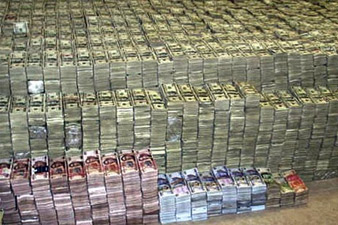
18/08/2014 15:51
'Smell of dollars' could catch smugglers
Criminals are smuggling billions in US bank notes into Mexico every year, but help could be on the way for border guards, the BBC reports.
A machine that can "smell" dollars - like a sniffer dog senses narcotics - is being developed.
For the first time, chemists have captured the unique fragrance of US paper money.
They announced their discovery at the American Chemical Society meeting.
"Money sniffing is an unknown art. No-one had ever tried to find these aromas," said Dr Joseph Stetter, of KWJ Engineering.
"We found that US currency emits a wide range of volatile organic compounds that make a 'fingerprint' we can identify in less than a minute."
His firm is developing a handheld cash detector for border police, called the Bulk Currency Detection System (BCDS).
In the past fiscal year, US officials seized more than $106m in smuggled cash heading to Mexico - the bulk of it laundered drug money.
But that's only a whisker of the estimated $39bn that crosses the border undetected every year - hidden in clothing, baggage and vehicles.
Current checks are done by guards with dogs - but training is expensive and time-consuming.
Airport-style X-ray scanners have had some success detecting currency - but they are large and impractical for busy border checkpoints.
To find a swifter solution, the US Department of Homeland Security made a public challenge to scientists to develop "a device that will search for and identify bulk quantities of currency - secreted on persons, in hand baggage and luggage, and/or in privately owned vehicles."
This money-sniffing machine must pass three intimidating challenges.
First - it must be precise enough to pick up the whiff of dollar bills amid a cacophony of background aromas.
"It has to work even in the presence of car exhaust, perfumes, food, and at a range of temperatures and humidity," said Dr Suiqiong Li, a researcher at KWJ.
"You need a smart algorithm to sort the needle from the haystack."
Next - it has to deliver a reading within seconds at hectic border crossings. There is no time to send samples off to a lab.
And finally, the probe has to be portable - light enough for a guard walking up and down a line of people, and flexible enough to reach inside vehicles or shipping containers.
KWJ has already developed sensors for carbon monoxide detectors and alcohol breathalysers - as modelled by their company mascot panda "Sensor Bear."








